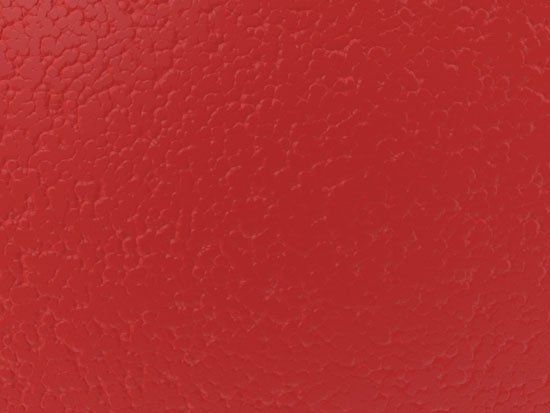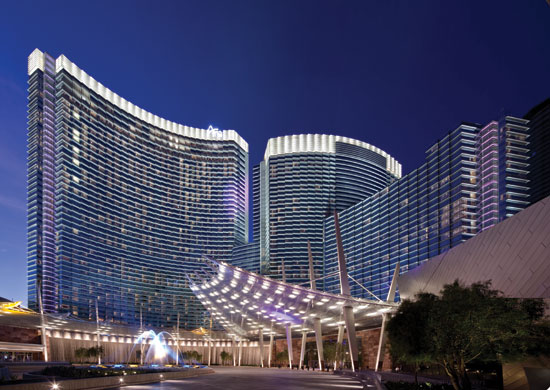Talking Color
Special Effects Pigments
Some pigments have been manipulated to produce special effects. Textured coatings from simple to complex, for example, can be used to emphasize certain elements, design or color, strengthen a coating or mimic a design style. The texture is achieved by adding an additive to the coating that creates the effect when baked in the oven.

Photo courtesy of Valspar
Textured paints redirect light for enhanced visual depth, with shading mirroring the eye’s natural horizontal motion.
Print coatings are another type of special effect pigment. Many companies want distinctive coatings that differentiate their brand image—a need that is being increasingly met by new coil coating technologies, unique coatings, ink and film systems, and multifaceted prints with reduced cycle times. In this process, a base top coat is applied to a coil then a patterned coil applies an ink coat to create the desired decorative pattern. Metal panels can be made to look like wood, granite, tile, stone, camouflage, various levels of weathering, or virtually any desired effect.
Solar Reflective Coatings
With rising energy costs and the growing global demand for energy reduction, there is an increased need for cool coatings. Roofs, particularly, can benefit from cool coatings as they are one of the least energy efficient components of the building envelope.
Both Solar Reflectance (SR) and Thermal Emittance (TE) are important factors in relation to the temperature a roof will reach in direct sunlight. SR refers to the amount of solar energy that is reflected by the roof. TE is the amount of heat energy a roof can reemit in the form of infrared energy into the atmosphere. Both are measured on a scale from 0.00 to 1.00, with 1.00 being the most reflective or emissive. The closer the values are to 1.0, the more efficiently heat is reflected and emitted. The greater the amount of solar energy reflected from the roof surface, the less energy the building will need to cool down. In fact, peak cooling energy demand may be reduced by up to 15 percent.
One way to a cooler roof is via solar reflective pigments, which have been altered physically and chemically to reflect infrared radiation, while still absorbing the same amount of visible light—this keeps the temperature of the roof lower, and reduces the amount of heat transferred into the building below. They are the same color as less reflective pigments, yet stay much cooler. Cool roofs can influence the “heat island,” a term used to describe built-up urban areas that are hotter than their surrounding rural areas. The urban heat island effect is common to cities in industrialized nations where the outside air temperature is 5 to 10 degrees Fahrenheit hotter than outlying areas.
In addition to contributing to LEED points in the Sustainable Sites, Energy and Atmosphere and Materials and Resources areas, solar reflective coatings can contribute to the credit for Heat Island Reduction, providing they have an SRI equal to or greater than the designated values set by LEED. The accompanying figure shows SRI targets for LEEDv4.
Solar reflective pigments are also used on wall panels and extrusions to keep a building and its components cooler than bare aluminum, anodized aluminum, or steel. It is important to note, however, that it can be difficult at times to achieve the required solar reflectance and also the desired color match. In some cases a specified solar reflectance is simply not achievable in the desired color space.










